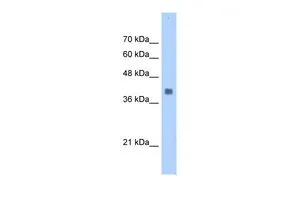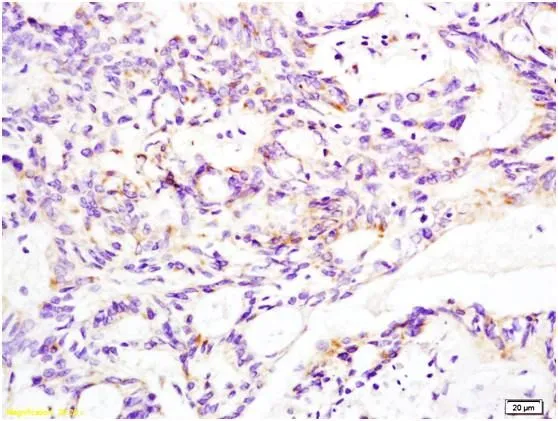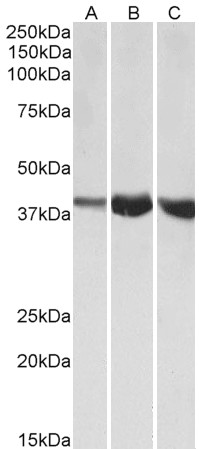
WB analysis of HepG2 cells using GTX46257 Aldolase A antibody at 0.25microg/ml.
Aldolase A antibody, N-term
GTX46257
ApplicationsWestern Blot
Product group Antibodies
TargetALDOA
Overview
- SupplierGeneTex
- Product NameAldolase A antibody, N-term
- Delivery Days Customer9
- Application Supplier NoteWB: 0.2-2.5 ug/ml. *Optimal dilutions/concentrations should be determined by the researcher.Not tested in other applications.
- ApplicationsWestern Blot
- CertificationResearch Use Only
- ClonalityPolyclonal
- Concentration0.5-1 mg/ml
- ConjugateUnconjugated
- Gene ID226
- Target nameALDOA
- Target descriptionaldolase, fructose-bisphosphate A
- Target synonymsALDA, GSD12, HEL-S-87p, fructose-bisphosphate aldolase A, aldolase A, fructose-bisphosphate, epididymis secretory sperm binding protein Li 87p, fructose-1,6-bisphosphate triosephosphate-lyase, lung cancer antigen NY-LU-1, muscle-type aldolase
- HostRabbit
- IsotypeIgG
- Protein IDP04075
- Protein NameFructose-bisphosphate aldolase A
- Scientific DescriptionThis gene encodes a member of the class I fructose-bisphosphate aldolase protein family. The encoded protein is a glycolytic enzyme that catalyzes the reversible conversion of fructose-1,6-bisphosphate to glyceraldehyde 3-phosphate and dihydroxyacetone phosphate. Three aldolase isozymes (A, B, and C), encoded by three different genes, are differentially expressed during development. Mutations in this gene have been associated with Glycogen Storage Disease XII, an autosomal recessive disorder associated with hemolytic anemia. Disruption of this gene also plays a role in the progression of multiple types of cancers. Related pseudogenes have been identified on chromosomes 3 and 10. [provided by RefSeq, Sep 2017]
- Storage Instruction-20°C or -80°C,2°C to 8°C
- UNSPSC12352203

![FACS analysis of A549 cells using an isotype control (black) or Aldolase A antibody [AT3F9] at 2-5ug for 1,000,000 cells (red).](https://www.genetex.com/upload/website/prouct_img/normal/GTX16497/GTX16497_FACS_w_23060620_840.webp)






